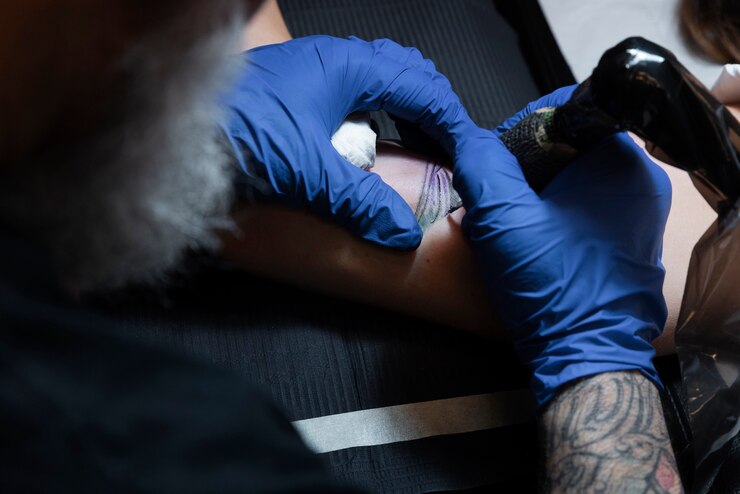Tattoo removal
1. Laser Removal
- How it works: High-intensity laser light targets the tattoo pigments, breaking them down into smaller particles, which are then absorbed and eliminated by the body’s immune system.
- Types of lasers:
- Q-switched lasers: Often used for tattoo removal as they emit short, intense pulses of light.
- Picosecond lasers: Newer technology that can break up ink more effectively, often requiring fewer treatments.
- Pros: Generally the most effective and widely used method.
- Cons: Requires multiple sessions (usually 5-10) spaced several weeks apart, and can cause some discomfort or skin irritation. There may be scarring or skin discoloration, especially with darker ink colors.
2. Dermabrasion
- How it works: A rotating device is used to “sand” the skin down to remove the layers where the ink is deposited.
- Pros: Can be effective for shallow tattoos.
- Cons: Painful, can cause scarring, and may not completely remove deep or colorful tattoos.
3. Excision (Surgical Removal)
- How it works: The tattooed skin is surgically removed, and the remaining skin is stitched back together.
- Pros: Suitable for small tattoos and provides immediate results.
- Cons: Involves surgery, which may lead to scarring, and is not practical for large tattoos.
4. Tattoo Removal Creams
- How it works: Creams claim to fade tattoos over time by breaking down the ink.
- Pros: Non-invasive and can be done at home.
- Cons: Effectiveness is questionable, and there are risks of skin irritation or allergic reactions. These creams are generally less effective than professional methods.
5. Saline Tattoo Removal
- How it works: A saline solution is injected into the tattooed area, causing the pigment to be drawn out of the skin.
- Pros: A relatively gentle option with fewer risks than laser removal.
- Cons: It may require multiple sessions and can be less effective for darker inks.

